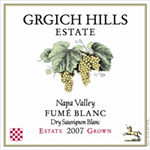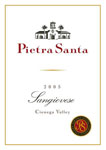Pesto sauce, generally comprising basil, garlic, olive oil, pine nuts, grated hard cheese and salt, originated in Genoa of Northern Italy, but no mention appears in the United States until 1944, when the New York Times reported an imported, canned pesto paste. Soon after, a recipe appeared in Sunset Magazine in 1946, contributed by Angelo Pellegrini. But the sauce did not gain popularity in the United States until the 1980s and 1990s, partly because fresh basil was not sold here until the 1970s. For a time, a mini pesto fever took hold with chefs and home cooks prolifically turning out recipe after recipe, varying the proportions of olive oil, cheese and basil and even changing the herb and nut combinations to such concoctions as parsley and/or mint with pistachios.
Today, pesto sauce is considered a classic, but what do most connoisseurs select as its accompanying wine and why? The below team of culinary professionals, including one sommelier, one master sommelier, one wine educator and one master chef, treats us to their visions of the pesto pasta meal.
My wife and I spent some time in Sicily a few summers back. It was hot and sunny and relaxing. We spent several weeks on the east coast, at the base of Mount Etna, driving through small villages with names that now elude me. One name, one wine producer that does not elude me is Benanti. A quality-conscious family-owned winery situated just north of Catania is producing some of the finest wines from indigenous and international varieties. One of their wines, the 
----------------------------------------------
Focus: Structure. With the green flavors from basil and pungency from garlic, selecting a wine that is not too ripe is important.
Wine that possesses a natural green character will do very well here: sauvignon blanc from the Loire, albarino from Galicia, arneis from Piemonte.
A green characteristic also means that the wine will maintain lively acidity, providing a sense of freshness. Clean and crisp is the key here, as the basil and garlic will make overripe oak-influenced wines very awkward.
– Yoon Ha, Sommelier, La Toque Restaurant, Napa CA.
----------------------------------------------

----------------------------------------------
Pesto pasta sauce – depends on if tomatoes or cheese is involved; with tomatoes I would do a sagrantino or rosso piceno – Chris Blanchard, Master Sommelier, Chappellet Winery, St. Helena, CA.
Editor’s Note: Sagrantino, hailing from the Umbria region of central Italy, is not widely known outside of Italy, due to its tiny production. Only about 250 acres are farmed within the village of Montefalco and surrounding areas. The wine’s dark red fruit character and strong tannins will cut the richness of the pesto sauce, while harmonizing with the tomatoes added in Chris Blanchard’s treatment.
Rosso piceno is a red blend originating from Marche, on the coast of the Adriatic in Italy. The mélange tends to consist of about 60% sangiovese and various quantities of Marche’s montepulciano, and local grapes passerina and white trebbiano. The wine’s profile has been compared to chianti, known for its affinity to tomato-based pasta sauces and cheese.
----------------------------------------------

----------------------------------------------
Every Spring Julie [Chef Salazar’s wife, Chef Julie Tan] and I, go out to our local nursery to buy and plant the sweet Italian basil plant that will give us such joy in flavors for many months to come. One of the sauces that we make is, of course, pesto for pesto pasta.
I think the wine that matches the best for this depends on how you make your sauce.
If you use a lot of basil leaves and olive oil and just a little of the pine nuts, garlic and parmigiano-reggiano cheese, then the sauce will take on more of a green herbal element and that would match nicely with a sauvignon blanc from New Zealand or a crisp Hungarian hárslevelű wine. The green herbal notes in the wine will match that of the pesto sauce.
On the other hand, if one tends to go heavy on the pine nuts, garlic and cheese, then an unoaked California chardonnay or an Argentine tottontes would add to the rich texture of the sauce while using its acids to cut through some of the existing richness.
And if it has to be red wine, then I would recommend looking for an older vintage Bordeaux from a chateau in the St. Emilion region, that contains a heavy amount of cabernet franc as its main varietal. The cabernet franc tends to have a slight green, vegetable characteristic as it matures. The butter and cheese in the sauce will mellow out some of the already aging tannins in the wine and add depth to the entire combination. – Master Chef Roy Salazar, Instructor and Project Manager, Le Cordon Bleu California Culinary Academy, San Francisco, CA. Certified Master Chef, Taster and Sommelier [Europe] and leader in several independent projects
----------------------------------------------







